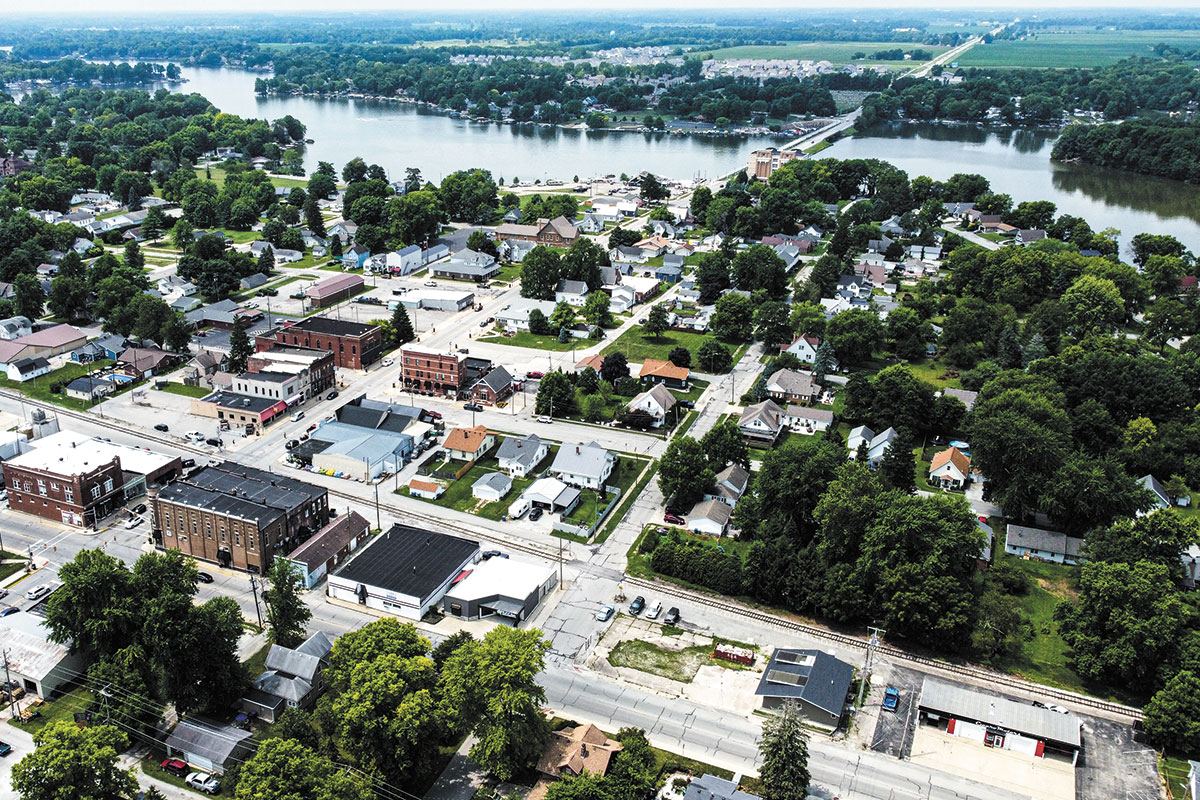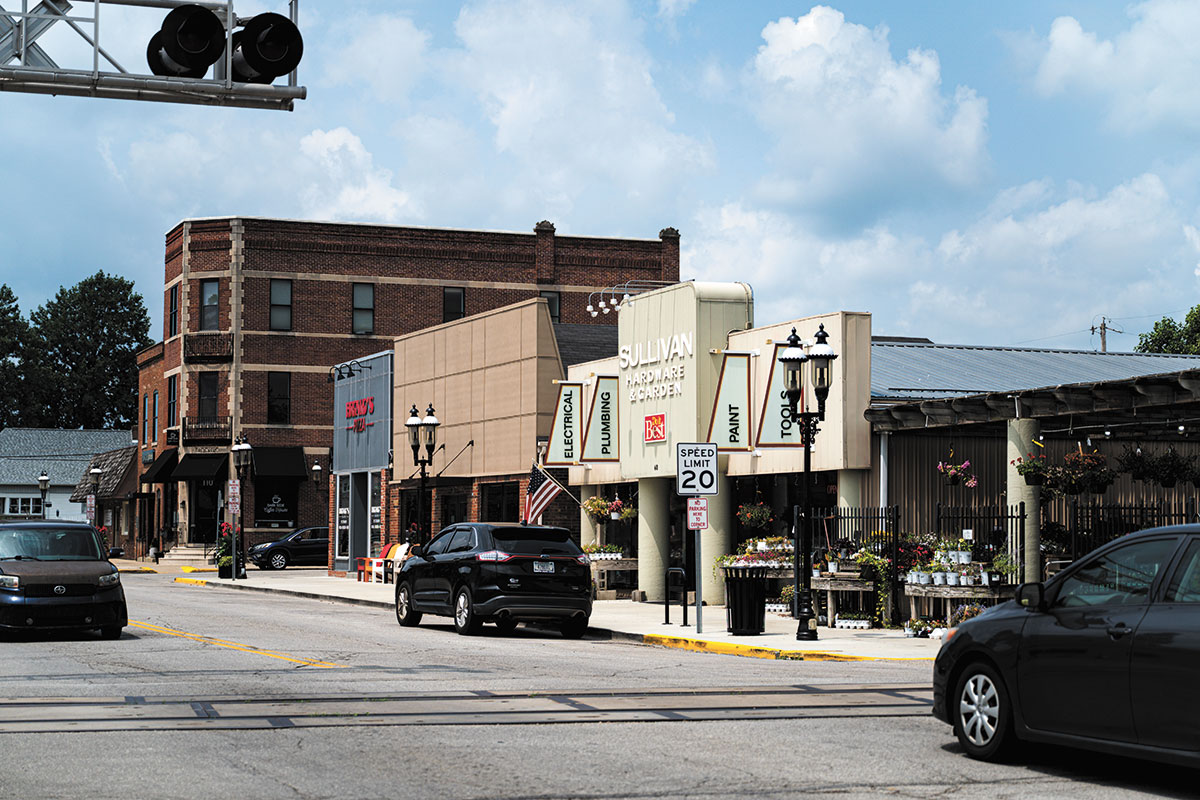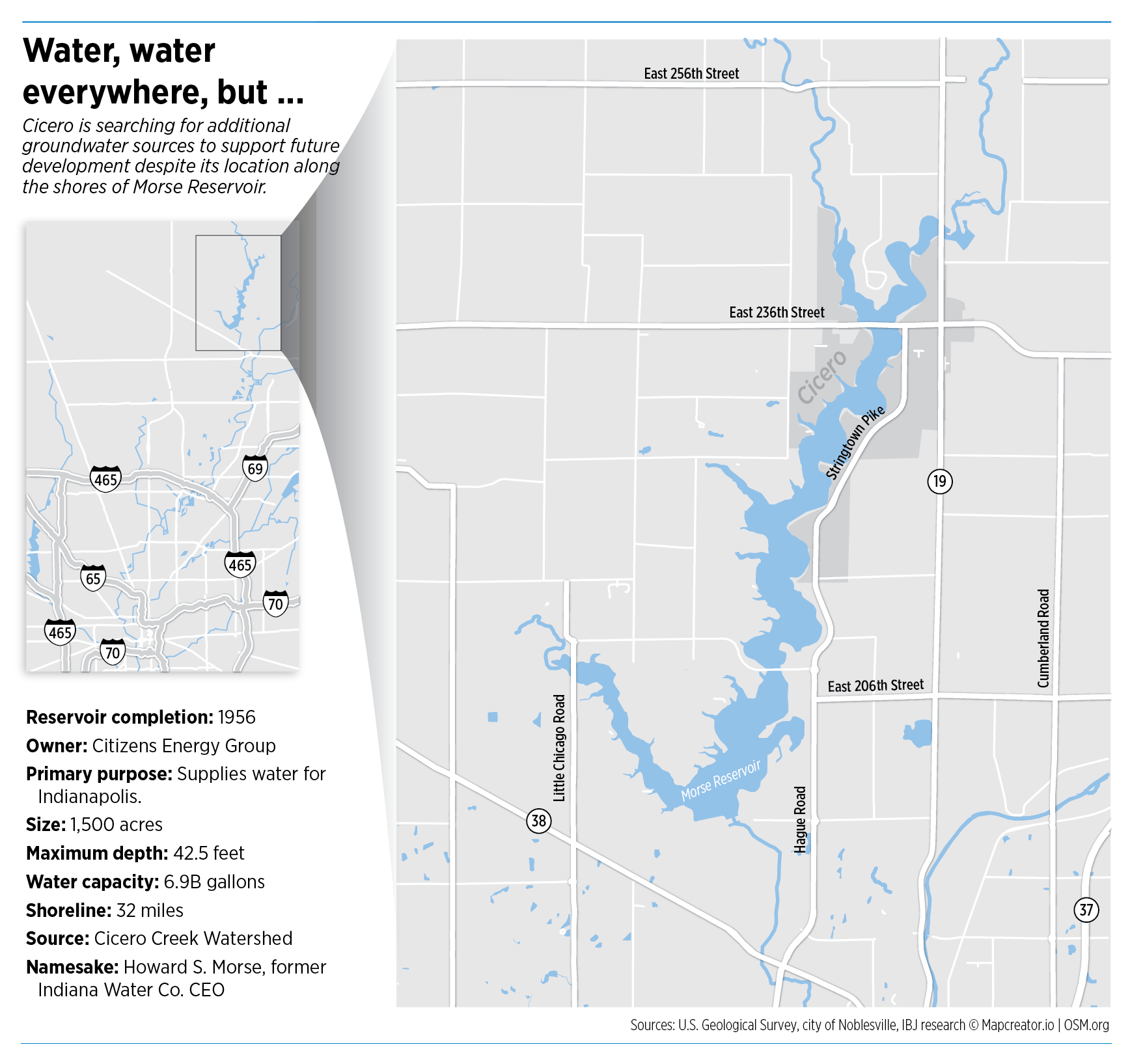Subscriber Benefit
As a subscriber you can listen to articles at work, in the car, or while you work out. Subscribe Now
Boaters on Morse Reservoir in Cicero would have a hard time imagining the town of 5,300 in northern Hamilton County is looking for water. But finding new water sources is the only way the community will be able to grow.
Cicero isn’t running dry. The town has enough groundwater capacity to support its current population and businesses. It is even prepared to service two housing developments under construction on the community’s west side.

However, without more water, Cicero could be left out as development accelerates north along the U.S. 31 corridor and the town looks to expand west. Cicero leaders are searching for groundwater sources on the town’s west side to complement four wells that draw from an aquifer on its east side off East 236th Street.
“It certainly is something that the county and us and everybody to the north of us in the county have to look at and address because it’s a tough commodity right now, but everybody’s got to have it,” Town Council President Chad Blueher told IBJ.
Morse Reservoir has been one of Cicero’s defining features for more than 60 years, but the town cannot simply draw water from the lake to meet its needs. The reservoir is owned by Citizens Energy Group and supplies water for Indianapolis.
Even if the reservoir were an option, the town’s water treatment plant can’t clean surface water, whose disinfection process is more complicated than that of groundwater and requires around-the-clock attention.

“It’s kind of strange because, here you are, you’ve got Morse Reservoir. There’s a huge body of water, and you’re wondering, ‘Man, they’ve got so much water there. Why can’t they use that?’ There’s a difference between surface water and groundwater,” Hamilton County Commissioner Mark Heirbrandt said.
Essentially, Morse Reservoir is to Cicero what the Pacific Ocean is to water-starved California. Lots of water, but not enough to drink.
“It’s odd to say Cicero, a town on a lake, doesn’t have water,” Blueher said.
Unlike Hamilton County communities near the White River, Cicero is not near a productive aquifer—a water-bearing layer of permeable rock, sand or gravel.

“There’s not equal access to the abundant [groundwater] supply everywhere in the county, and that’s kind of a problem,” said Jack Wittman, principal geoscientist for Texas-based engineering consulting firm Intera. “In a lot of ways, what’s not equal about the sort of luck or fortunes of the communities in the county is that some small towns really can’t grow as easily because they don’t have access to this one resource.”
Wittman, an Ellettsville resident, led a six-month study of central Indiana’s water resources and their impact on the ability to sustain economic development. Commissioned by the Indiana Finance Authority, the Central Indiana Water Study concluded in 2021 and found that, while the region as a whole is well-positioned in the coming decades when it comes to water resources, some counties are better served than others.
“It’s not unusual for water supply to be … a challenge for development,” Wittman said. “You either have to run a pipe from A to B, or you have to go deeper and try to find aquifers below, which in this case, there really isn’t much.”
It’s a predicament the Indiana Economic Development Corp. is attempting to solve in Boone County, where it is looking to attract companies to its 9,000-acre LEAP Lebanon Innovation and Research District.
The current plan is to construct a 35-mile pipeline from a Wabash River aquifer in Tippecanoe County and transport as much as 100 million gallons of water a day to the innovation district. The water would then be treated and piped into a tributary of the White River or Eagle Creek Reservoir.
“All of this stuff that’s happened with the IEDC and what’s happened over in Boone County and them not having [an easy water source] has, I think, really opened the eyes of people around the state in regard to water,” Heirbrandt said.
Heirbrandt, who leads Hamilton County’s water research efforts, meets quarterly with a group he established five years ago that includes officials from the town, county and Indianapolis-based Wessler Engineering to wrestle with solutions to Cicero’s problem.
One idea earlier this year was to include Cicero in a plan focused on development along the U.S. 31 corridor, particularly in Bakers Corner where Hamilton County is working on a $45.1 million project to install water and sewer utilities at U.S. 31 and 236th Street.
The original plan for Bakers Corner was to pump water from the Sheridan area in the northwestern part of the county. The water would also serve the Indiana National Guard armory under construction at U.S. 31 and 276th Street, which Heirbrandt predicted will lead to a rapid increase in residential and commercial development.
However, to involve Cicero in the project, Heirbrandt offered an alternative—with a short timeline to decide—to bring water from Noblesville.
“I told them, ‘We can bring this up this way, and I’ll stem it off. I’ll put a water meter on there, and I’ll let you buy wholesale from Indiana American Water,” Heirbrandt said. “We won’t mark it up or anything like that, and you can buy wholesale from them directly.”
Ultimately, Cicero officials decided to continue looking on their own for aquifers to solve their problem.
Blueher said the town has found underground water in places on the west side, but none was as productive as needed. The state requires aquifers that can produce 600 gallons of water per minute, so the search for an adequate water source continues.
“We personally felt like, if we could find an aquifer out west, that would be ideal,” said Blueher, an engineering group manager at Aptiv Westfield Engineering Laboratory. “But we felt like we could manage our utility better than what we would have if we sold it or had to buy our water.”
Two housing developments are under construction on the west side of Cicero—a 169-house project by Indianapolis-based Lennar Homes of Indiana and a 250-house development by Indianapolis-based M/I Homes of Indiana.
Blueher said the town has enough water capacity to serve those subdivisions.
“We just can’t at this present time service any additional, I’ll say, 200- or 300-home residential developments until [the water issue] gets resolved,” Blueher said.

How much growth?
Cicero was a small town surrounded by farmland before Cicero Creek was dammed near East 196th Street in Noblesville in the 1950s to create Morse Reservoir, which opened in 1956. The town’s population in 1950 was 1,021, according to the U.S. Census Bureau; now, it’s five times that size.

David Heighway, a county historian at Hamilton East Public Library in Noblesville, said Cicero has been “rescued four times by geographic circumstance.”
The town owes its founding to its location on the Lafayette Trace, an ancient Native American game trail, and its first growth spurt, in the 1850s, to the construction of the Peru and Indianapolis Railroad. In 1887, the discovery of natural-gas deposits in the area brought a rush of people and glass-making factories to town.
The gas dissipated within 20 years, and population declined. Cicero went through a long period where it returned to its farming roots, even after the Indianapolis Water Co. (now Citizens Energy Group) began purchasing land for a second reservoir to serve Indianapolis. (Geist Reservoir had opened in Hamilton and Marion counties in 1943.)
It took another 20 years after Morse Reservoir opened for nearby development to pick up, Heighway said.
Cicero “was just agricultural territory, and [the reservoir] was just a big vat of water out in the middle of nowhere, and there was just really nothing to move to,” Heighway said. “And then, all of a sudden, cars improved, roads improved, and it’s kind of like, ‘Yes, Cicero is now within striking distance of Indianapolis.’”
This time around, Cicero’s “geographic circumstance” could impede growth instead of spur it, unless the town is able to find additional water sources. But how much development does the town really want?
Blueher said he and his fellow town councilors are sensitive to residents’ concern about quick growth. They do not want Cicero “to become Noblesville or Westfield or anything in between.”
“The reality is that, I think for us on the council and most of the residents … one of the charms of Cicero is that small-town feel on the water,” he said. “I always tell people that the day the town overgrows its ability to drive golf carts through it is probably the day that the Town Council would be crucified.”
But, he added, he is in favor of strategic growth. He predicted that Cicero will grow west toward U.S. 31 once its water situation is alleviated.•
Correction: The graphic in a previous version of this article included an incorrect statistic for the capacity of Morse Reservoir. The graphic has been corrected to reflect that the reservoir holds 6.9 billion gallons of water.
Please enable JavaScript to view this content.


Correction: The capacity of Morse is actually 6.9 BILLION gallons, not 6.9 million (which would not even supply a city the size of Bloomington for 12 hours).